Abstract
The intestinal tract of adult mice provides effective protection against peroral infection with group B coxsackievirus. This protective function consists of at least two separate components. One is a barrier effect that prevents virus from passing through the mucosal side of the gut into the circulation. It becomes clearly evident at 18 days of life and is present thereafter. The other is a clearance mechanism that acts to eliminate virus from the enteric tract after infection has occurred. This is first demonstrable at about 14 to 18 days and also persists. The appearance of these protective functions coincides with the known development of enzymatic and morphological changes in the gut associated with the transition from suckling to weanling.
Full text
PDF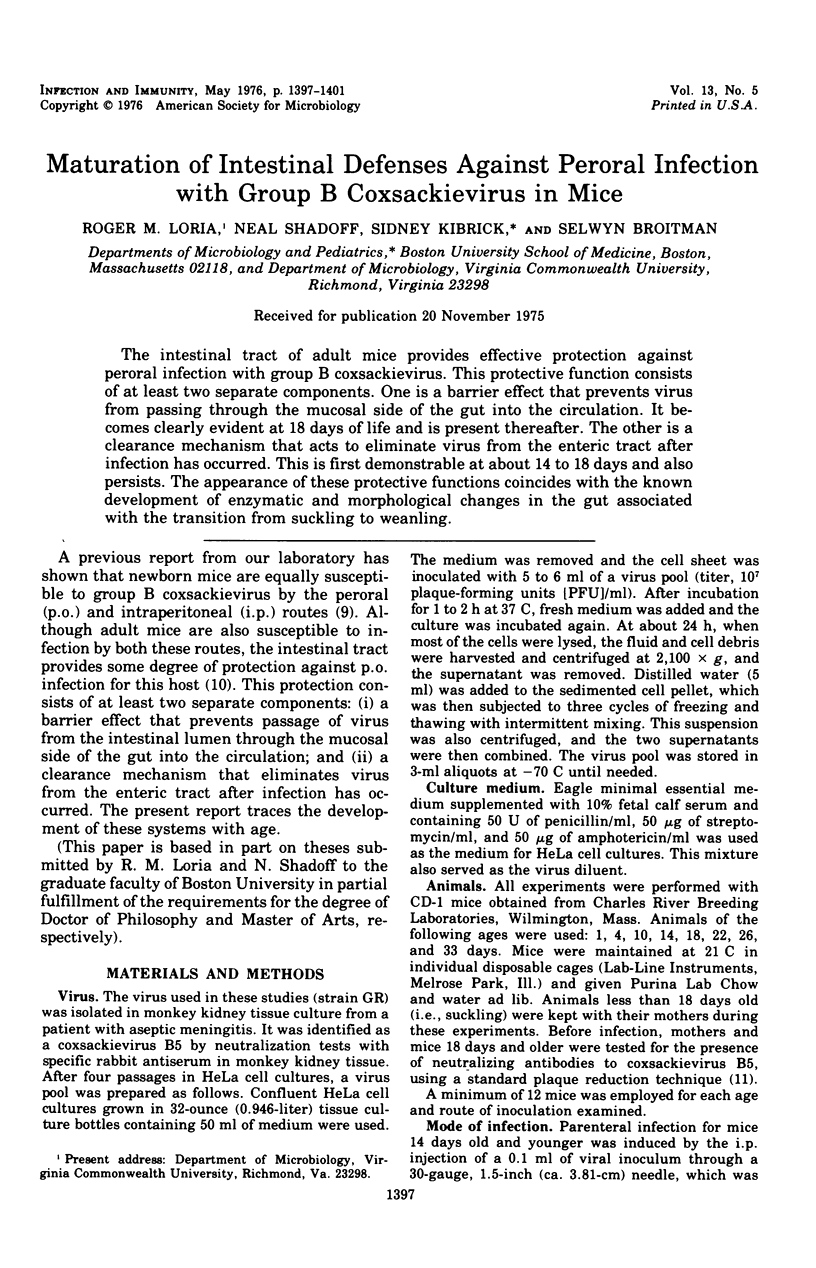
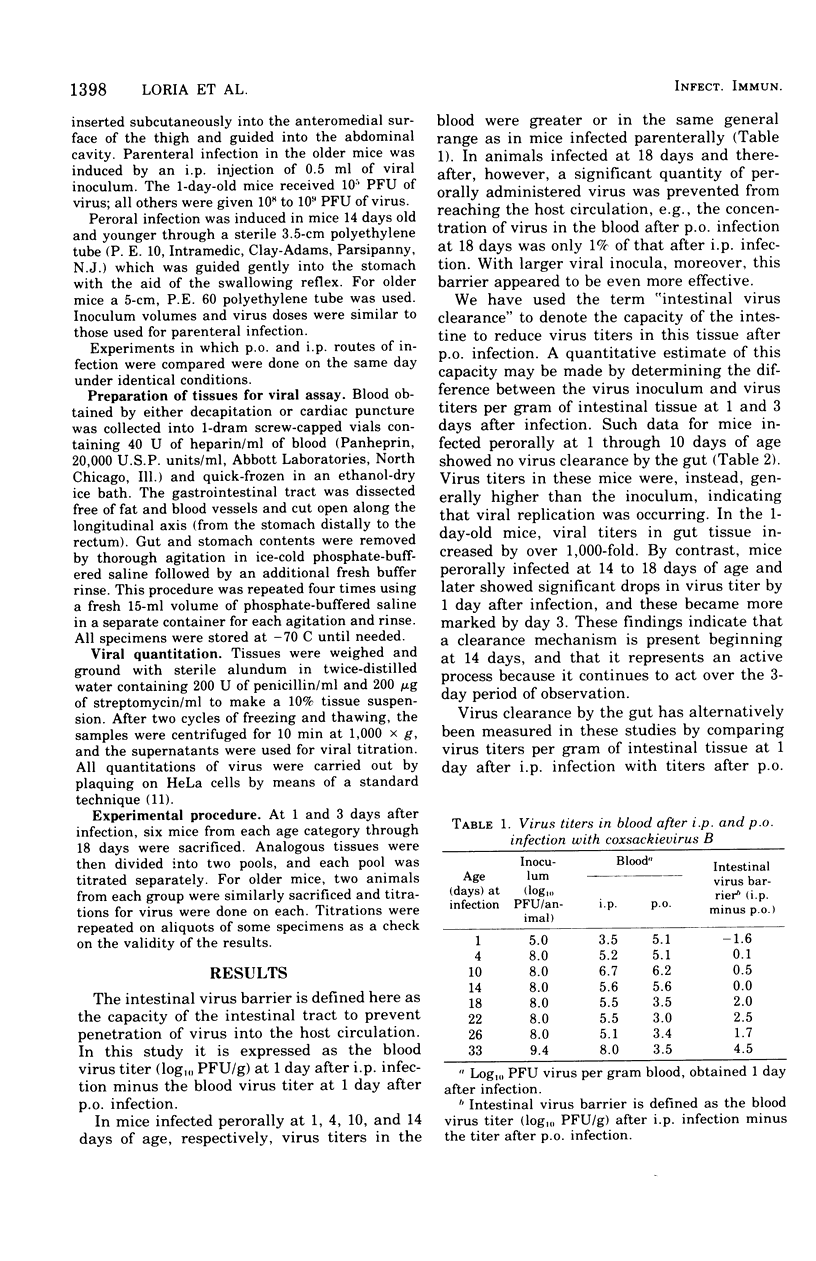
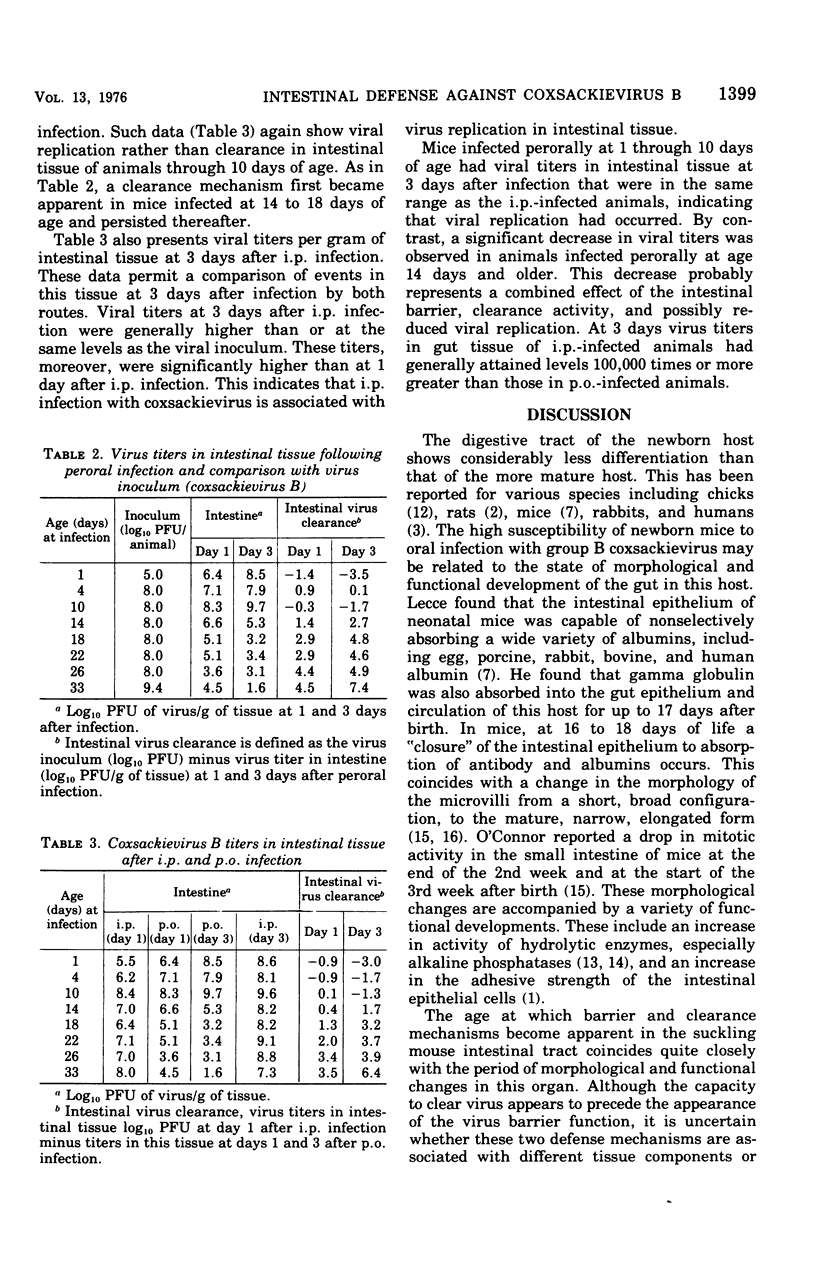
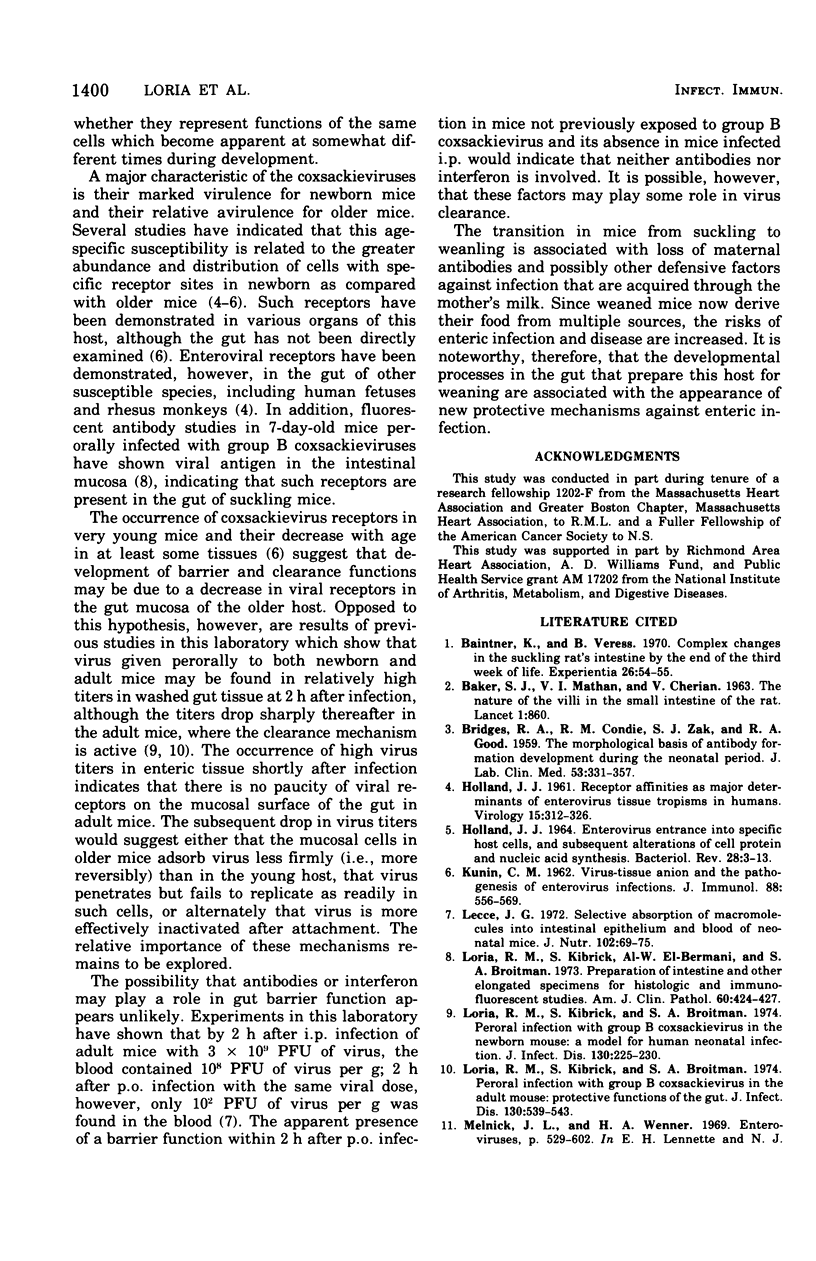
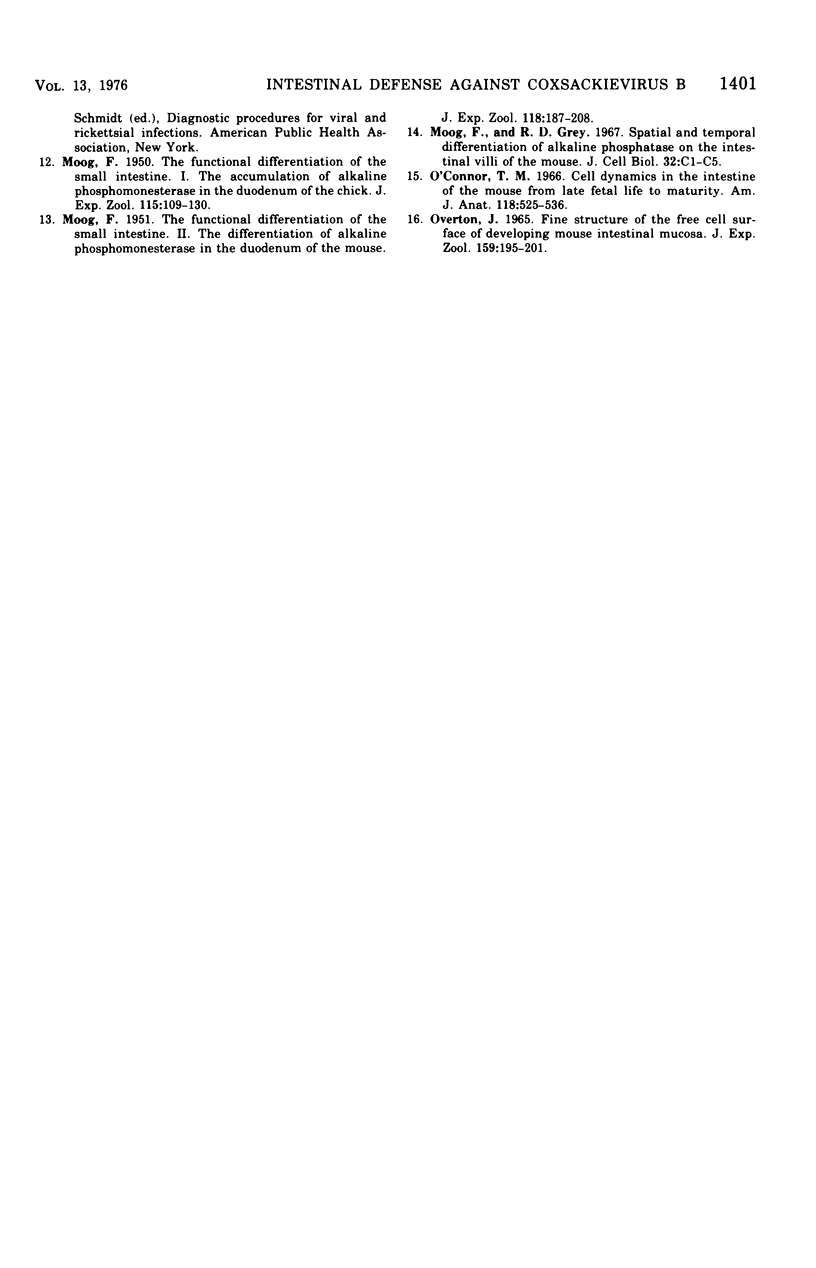
Selected References
These references are in PubMed. This may not be the complete list of references from this article.
- BAKER S. J., MATHAN V. I., CHERIAN V. The nature of the villi in the small intestine of the rat. Lancet. 1963 Apr 20;1(7286):860–860. doi: 10.1016/s0140-6736(63)91630-1. [DOI] [PubMed] [Google Scholar]
- BRIDGES R. A., CONDIE R. M., ZAK S. J., GOOD R. A. The morphologic basis of antibody formation development during the neonatal period. J Lab Clin Med. 1959 Mar;53(3):331–357. [PubMed] [Google Scholar]
- Baintner K., Jr, Veress B. Complex changes in the suckling rat's small intestine by the end of the 3d week of life. Experientia. 1970 Jan 15;26(1):54–55. doi: 10.1007/BF01900388. [DOI] [PubMed] [Google Scholar]
- HOLLAND J. J. ENTEROVIRUS ENTRANCE INTO SPECIFIC HOST CELLS, AND SUBSEQUENT ALTERATIONS OF CELL PROTEIN AND NUCLEIC ACID SYNTHESIS. Bacteriol Rev. 1964 Mar;28:2–13. doi: 10.1128/br.28.1.2-13.1964. [DOI] [PMC free article] [PubMed] [Google Scholar]
- HOLLAND J. J. Receptor affinities as major determinants of enterovirus tissue tropisms in humans. Virology. 1961 Nov;15:312–326. doi: 10.1016/0042-6822(61)90363-4. [DOI] [PubMed] [Google Scholar]
- KUNIN C. M. Virus-tissue union and the pathogenesis of enterovirus infections. J Immunol. 1962 May;88:556–569. [PubMed] [Google Scholar]
- Lecce J. G. Selective absorption of macromolecules into intestinal epithelium and blood by neonatal mice. J Nutr. 1972 Jan;102(1):69–75. doi: 10.1093/jn/102.1.69. [DOI] [PubMed] [Google Scholar]
- Loria R. M., Kibrick S., Broitman S. A. Peroral infection with group B coxsackievirus in the adult mouse: protective functions of the gut. J Infect Dis. 1974 Nov;130(5):539–543. doi: 10.1093/infdis/130.5.539. [DOI] [PubMed] [Google Scholar]
- Loria R. M., Kibrick S., Broitman S. A. Peroral infection with group B coxsackievirus in the newborn mouse: a model for human infection. J Infect Dis. 1974 Sep;130(3):225–230. doi: 10.1093/infdis/130.3.225. [DOI] [PubMed] [Google Scholar]
- Loria R. M., Kibrick S., el-Bermani al-W, Broitman S. A. Preparation of intestine and other elongated specimens for histologic and immunofluorescent studies. Am J Clin Pathol. 1973 Sep;60(3):424–427. doi: 10.1093/ajcp/60.3.424. [DOI] [PubMed] [Google Scholar]
- Moog F., Grey R. D. Spatial and temporal differentiation of alkaline phosphatase on the intestinal villi of the mouse. J Cell Biol. 1967 Feb;32(2):C1–C5. doi: 10.1083/jcb.32.2.c1. [DOI] [PMC free article] [PubMed] [Google Scholar]
- O'Connor T. M. Cell dynamics in the intestine of the mouse from late fetal life to maturity. Am J Anat. 1966 Mar;118(2):525–536. doi: 10.1002/aja.1001180212. [DOI] [PubMed] [Google Scholar]
- Overton J. Fine structure of the free cell surface in developing mouse intestinal mucosa. J Exp Zool. 1965 Jul;159(2):195–201. doi: 10.1002/jez.1401590205. [DOI] [PubMed] [Google Scholar]


